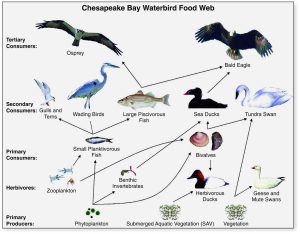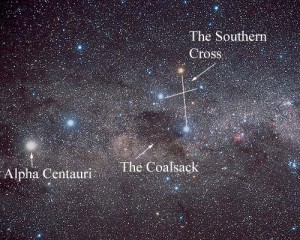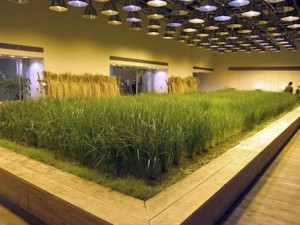1. Introduction

In the previous tutorial, we examined food chains and food webs. Now that we know about the different roles that organisms can play in ecosystems, we can explore how the flow of energy shapes an ecosystem. What does that mean? As we’ll see, energy flow and energy availability determines how many producers, primary consumers, and secondary consumers are in an ecosystem.
Let’s start with a thought experiment.
2. A Thought Experiment: In a giant spaceship –an artificial ecosystem with a fixed amount of energy – could you support more carnivores or herbivores?

In the future, humans might try to colonize the Earth-like planets that are being discovered in orbit around other stars.
Pretend that you’re the director of the first spaceship to colonize the nearest solar system. This system, found around a star called Alpha Centauri, is 4.6 light years away. That means that light, travelling at 300,000 kilometers/second, takes 4.6 years to get from where we are to that star.
Even with revolutionary improvements in engineering, it’s going to take a long time to get there. If our ship moved at 1/10th light speed, it would take 46 years.

One consequence of having to embark on such a long journey is that the colonists are not going to be able to bring enough food to supply them for the whole trip. Storing 46 years’ worth of food would make the ship impossibly big and heavy. Instead, they’re going to have to grow their food on the ship, and recycle every bit of it.
For reasons related to population genetics, we’ll want the crew to be as big as possible. After all, we’re going to found a new world, and we want our new population to have as much genetic diversity as possible. So here’s the question To maximize crew size, should the crew eat mostly as herbivores, with most of their food coming from plants? Or should they eat mostly as carnivores, getting most of their food from animals that eat plants? You can think of the second option as something like the typical North American diet (one that you might be following right now), where some form of meat can be the main source of calories at every meal.
Remember that this is a thought experiment: you might be able to think of an “in-between” solution, but please don’t. Think of the consequences of one strategy (vegetarianism) versus the other (being almost exclusively carnivorous).
In the carnivore strategy, our crew people would grow plants that they would feed to animals such as fish, chicken and cows, and then eat the meat from these animals. Space and available energy on the ship are limited. What strategy will enable us to have the largest possible crew?
Here’s a couple of facts to keep in mind as you think about your decision.
- The ship is powered by a nuclear reactor that can provide enough light to grow a lot of food.
- Using this energy, we can harvest 2,000,000 calories of plant food energy every day.
- A calorie is a unit of food energy. Here are some typical foods and their caloric value.
- An apple: about 100 Calories.
- A slice of bread: about 100 calories
- A quarter of a pound of hamburger: about 300 calories.
- A cup of brown rice: 200 calories
- A cup of broccoli: 30 calories
- A tablespoon of vegetable oil: 120 calories
- To keep their body weight constant, a person who weighs 150 pounds needs to consume about 2250 calories/day.
So, make your decision. Please write it down on the accompanying student learning guide (note: document is coming soon!) Use the following sentence frame:
To support the largest possible crew, we should eat as ……. . My reasoning is as follows:
Don’t continue until you’ve committed your thoughts to writing:
Links
- Continue to the next HS Level tutorial in this module, Trophic Levels and Ecological Pyramids Part 2
- Ecosystems (HS Level) Main Menu
